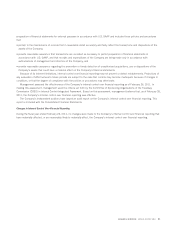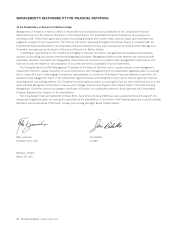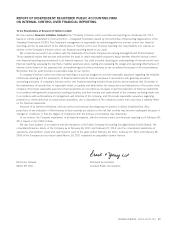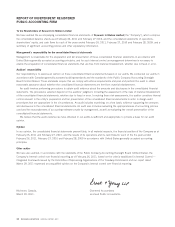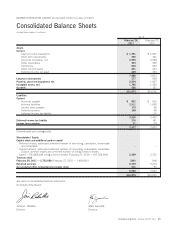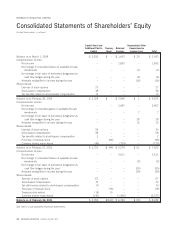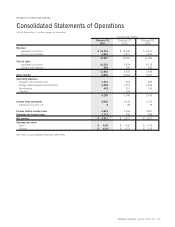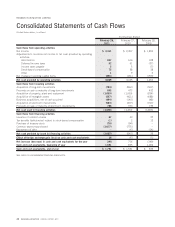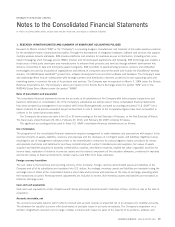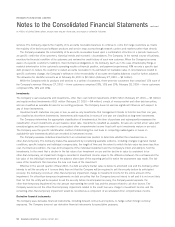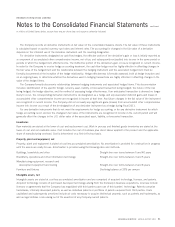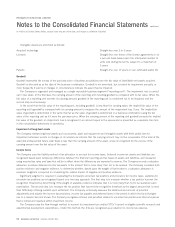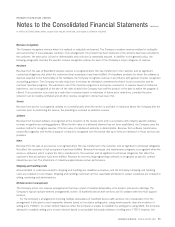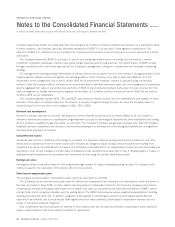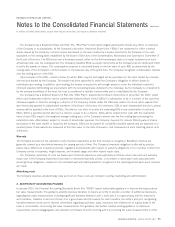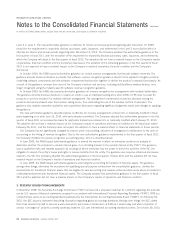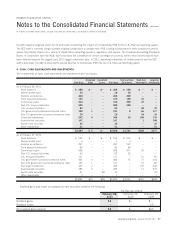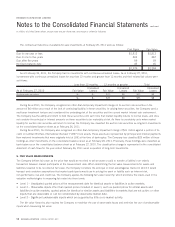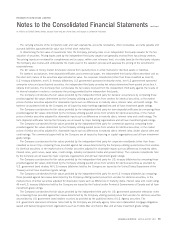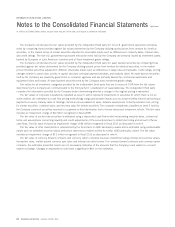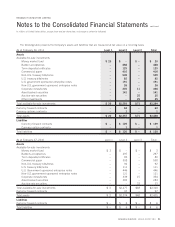Blackberry 2011 Annual Report Download - page 64
Download and view the complete annual report
Please find page 64 of the 2011 Blackberry annual report below. You can navigate through the pages in the report by either clicking on the pages listed below, or by using the keyword search tool below to find specific information within the annual report.The Company records all derivative instruments at fair value on the consolidated balance sheets. The fair value of these instruments
is calculated based on quoted currency spot rates and interest rates. The accounting for changes in the fair value of a derivative
depends on the intended use of the derivative instrument and the resulting designation.
For derivative instruments designated as cash flow hedges, the effective portion of the derivative’s gain or loss is initially reported as
a component of accumulated other comprehensive income, net of tax, and subsequently reclassified into income in the same period or
periods in which the hedged item affects income. The ineffective portion of the derivative’s gain or loss is recognized in current income.
In order for the Company to receive hedge accounting treatment, the cash flow hedge must be highly effective in offsetting changes in
the fair value of the hedged item and the relationship between the hedging instrument and the associated hedged item must be
formally documented at the inception of the hedge relationship. Hedge effectiveness is formally assessed, both at hedge inception and
on an ongoing basis, to determine whether the derivatives used in hedging transactions are highly effective in offsetting changes in the
value of the hedged items.
The Company formally documents relationships between hedging instruments and associated hedged items. This documentation
includes: identification of the specific foreign currency asset, liability or forecasted transaction being hedged; the nature of the risk
being hedged; the hedge objective; and the method of assessing hedge effectiveness. If an anticipated transaction is deemed no longer
likely to occur, the corresponding derivative instrument is de-designated as a hedge and any associated deferred gains and losses in
accumulated other comprehensive income are recognized in income at that time. Any future changes in the fair value of the instrument
are recognized in current income. The Company did not reclassify any significant gains (losses) from accumulated other comprehensive
income into income as a result of the de-designation of any derivative instrument as a hedge during fiscal 2011.
For any derivative instruments that do not meet the requirements for hedge accounting, or for any derivative instrument for which
hedge accounting is not elected, the changes in fair value of the instruments are recognized in income in the current period and will
generally offset the changes in the U.S. dollar value of the associated asset, liability, or forecasted transaction.
Inventories
Raw materials are stated at the lower of cost and replacement cost. Work in process and finished goods inventories are stated at the
lower of cost and net realizable value. Cost includes the cost of materials plus direct labour applied to the product and the applicable
share of manufacturing overhead. Cost is determined on a first-in-first-out basis.
Property, plant and equipment, net
Property, plant and equipment is stated at cost less accumulated amortization. No amortization is provided for construction in progress
until the assets are ready for use. Amortization is provided using the following rates and methods:
Buildings, leaseholds and other Straight-line over terms between 5 and 40 years
BlackBerry operations and other information technology Straight-line over terms between 3 and 5 years
Manufacturing equipment, research and
development equipment and tooling Straight-line over terms between 2 and 8 years
Furniture and fixtures Declining balance at 20% per annum
Intangible assets, net
Intangible assets are stated at cost less accumulated amortization and are comprised of acquired technology, licenses, and patents.
Acquired technology consists of purchased developed technology arising from the Company’s business acquisitions. Licenses include
licenses or agreements that the Company has negotiated with third parties upon use of third parties’ technology. Patents comprise
trademarks, internally developed patents, as well as individual patents or portfolios of patents acquired from third parties. Costs
capitalized and subsequently amortized include all costs necessary to acquire intellectual property, such as patents and trademarks, as
well as legal defense costs arising out of the assertion of any Company-owned patents.
RESEARCH IN MOTION ANNUAL REPORT 2011 51
RESEARCH IN MOTION LIMITED
Notes to the Consolidated Financial Statements
continued
In millions of United States dollars, except share and per share data, and except as otherwise indicated


